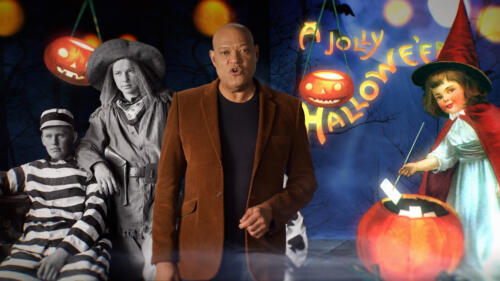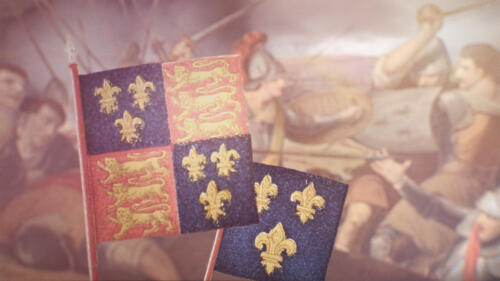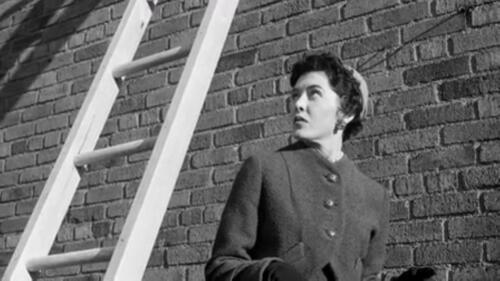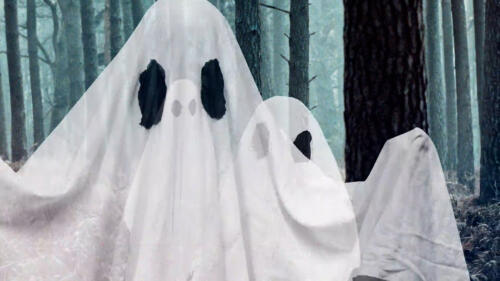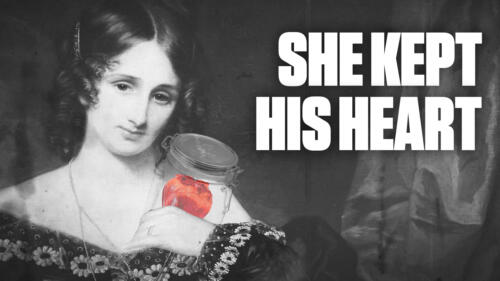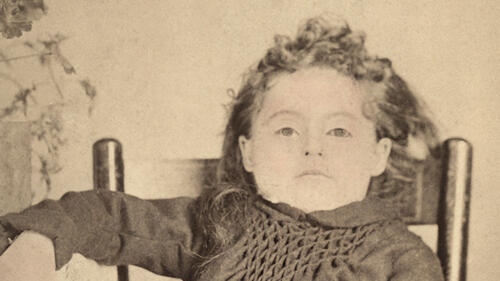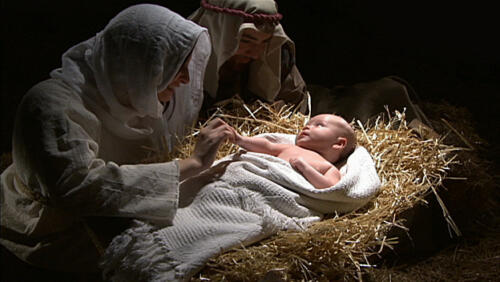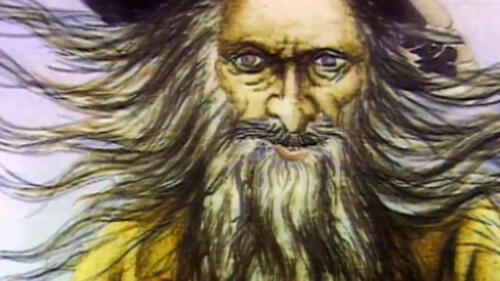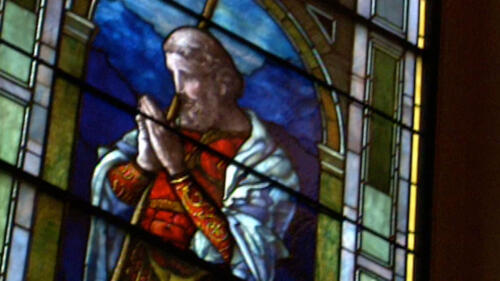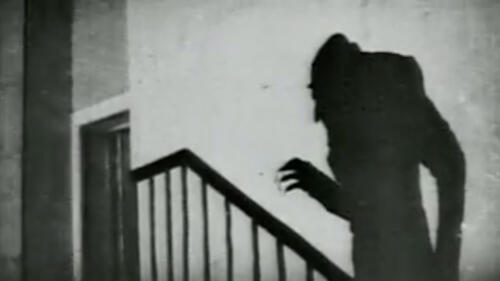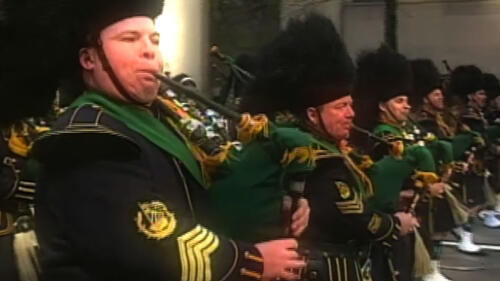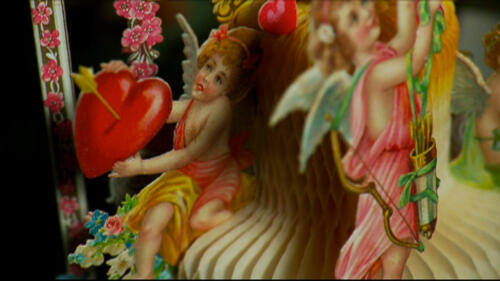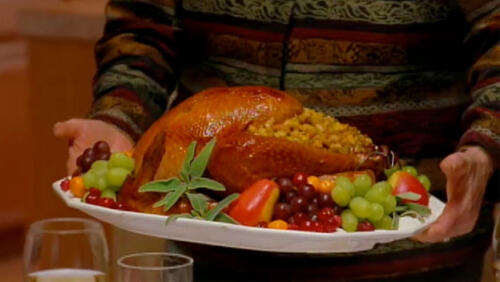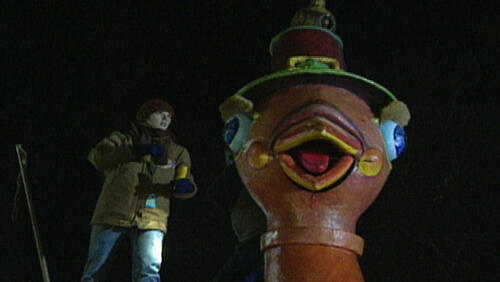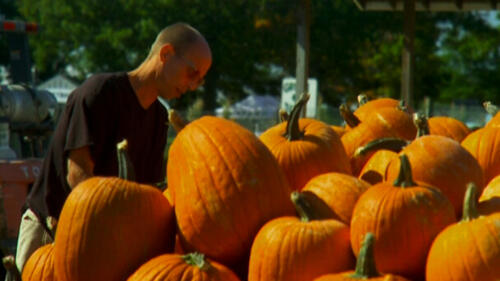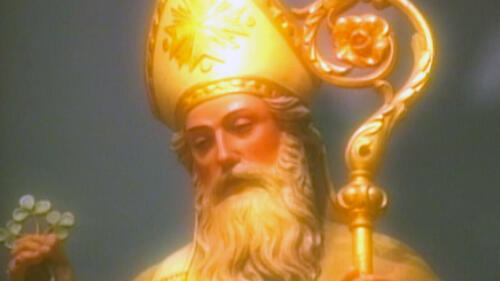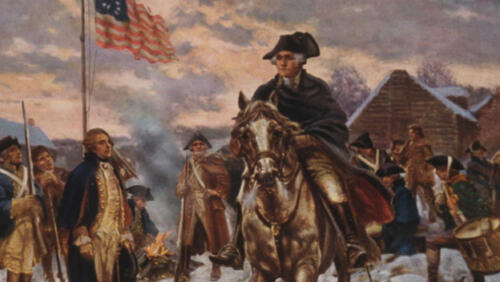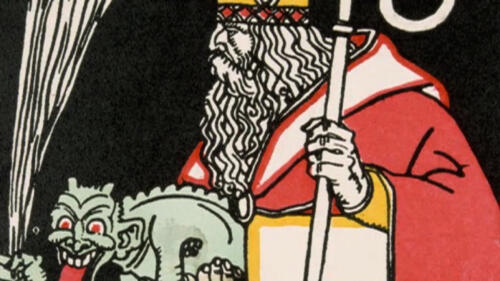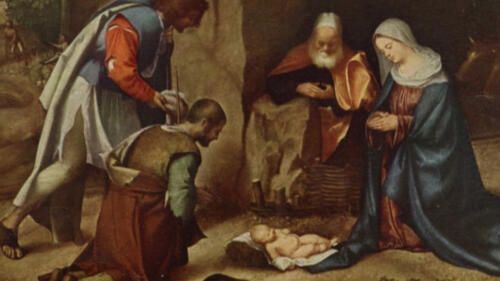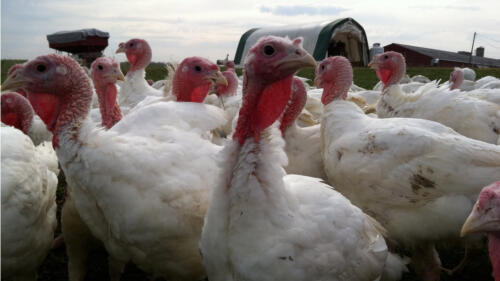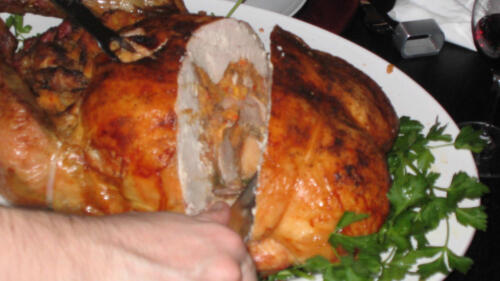Holidays
Holidays hold a special place in cultures around the world and each carry their own unique history, shaped by centuries of traditions and beliefs. From religious observances such as Yom Kippur and Ramadan to patriotic celebrations such as July Fourth and Presidents' Day, explore the stories behind the holidays.

Start Here

Veterans Day is a U.S. public holiday honoring military veterans that is observed annually on or around November 11.

Hanukkah (or Chanukah) is the eight-day Jewish celebration that commemorates the rededication during the second century B.C. of the Second Temple in Jerusalem, where according to legend Jews had risen up against their Greek-Syrian oppressors in the Maccabean Revolt.

Thanksgiving Day is a national holiday in the United States, and Thanksgiving 2025 occurs on Thursday, November 27.

Christmas is celebrated on December 25 and is both a sacred religious holiday and a worldwide cultural and commercial phenomenon.
Thanksgiving Becomes a Holiday
Thanksgiving Becomes a Holiday
Early Puritans observed Thanksgiving days of prayer, but Sarah Josepha Hale's crusade for a national day of thanks is what ultimately gave us Thanksgiving.
3 Fall Holidays
Explore related articles

It’s hard to imagine an American Thanksgiving table without the ubiquitous orange-crusted custard made from spiced and twice-cooked squash.

If you’ve ever received an anonymous flower basket at your doorstep on the first day of May, you may have been the recipient of a May Day basket.

The holiday, which celebrates renewal and fertility, involves dancing with fire.

These people went far beyond sending cards and chocolates to demonstrate their love.

Dim sum for Christmas? The experiences of immigrants in New York explain how the tradition began.

Department stores and malls realized early on how live Santa impersonators could help attract shoppers during the holiday season.

Edward Hibberd Johnson added flash and color to Christmas trees when he introduced electric lights in 1882.

A health scare caused Americans (including President Eisenhower) to forgo serving cranberry sauce at their holiday tables.

Many of the holiday songs played over and over each December were penned decades, or even centuries ago.

From eating red foods to promoting activism, Juneteenth traditions pay tribute to the liberation of America's enslaved.

Purim is a joyful Jewish holiday commemorating the salvation of the Jewish people from a near massacre in ancient Persia, as recounted in the Book of Esther.

Nowruz is a 13-day festival marking the Persian New Year and the first day of spring. The holiday symbolizes renewal and harmony with nature.

Holi, often called the "festival of colors," is a vibrant Hindu celebration.

Dressing in green on St. Patrick's can trace its roots to leprechaun legends, as well as a sign of Irish defiance.

Get the facts on the traditions of Ramadan and the significance behind the holiest month of the year for Muslims around the world.

Who was the real St. Patrick? Was that legend about the snakes true? And why did so many St. Patrick's Day traditions start in America?

Foods enjoyed during New Year are similar to those eaten throughout the year, but with special emphasis on bringing good fortune.

The history of Christmas trees goes back to the symbolic use of evergreens in ancient Egypt and Rome and continues with the German tradition of candlelit Christmas trees first brought to America in the 1800s.

Historical graves reveal corpses with iron rods through their chests, sickles across their necks and padlocks on their feet.

Explore the origins behind witch costume features—the hat, the black dress, prominent nose and green skin.

Jesus wasn't the only one believed to have risen from the dead. Stories of resurrection appear in ancient cultures around the world.

Chocolates and roses are common ways to mark Valentine's Day, but there are other, lesser-known traditions to commemorate the holiday.

Americans adjusted amid the war, and found different, often leaner ways to mark the holidays.

Without Squanto, a.k.a. Tisquantum, to interpret and guide them to food sources, the Plymouth Colony Pilgrims may have never have survived.

From biblical depictions of Christ casting out demons, to charismatic Christians in the '60s, to the story behind the 1973 movie, people have been attempting to expel evil for centuries.

When two young sisters claimed to communicate with ghosts in the mid-1800s, they soon became celebrity mediums and unwittingly spurred a trend.

Both honor U.S. military personnel—but the holidays arose for different reasons.

The holidays both celebrate the resurrection of Jesus Christ, but have some different traditions and are based on different calendars.

AANHPI Heritage Month is an annual celebration that recognizes the historical and cultural contributions of individuals and groups of Asian, Native Hawaiian and Pacific Islander descent to the United States.

Before you celebrate St. Patrick’s Day, get your facts straight by exploring common misconceptions about the holiday.

The founder of the Red Cross dedicated her life to helping others and fighting for equality.

After a trolley car collided with a bus carrying the 18-year-old Mexican artist, pain and resilience emerged as perennial themes in her work.

From Queen Amanirenas to the Dahomey Amazons, women battled colonialists to maintain their power and prevent enslavement.

Many celebrate the Nativity—and the New Year—in festive, sometimes whimsical, ways.

In medieval times, Christmas celebrations carried on for multiple raucous days and nights.

In 1876, Yale beat Princeton before a sparse crowd. By the mid-1880s, their annual contest was a major social event that attracted thousands of fans in New York.

The writer behind the play, which was made into a Cary Grant film, had studied the records of convicted murderer Amy Archer-Gilligan.

From pagan rituals to costumes and candy corn, discover how Halloween—and its associated traditions—has evolved through the ages.

As early as the 13th century, the Catholic Church linked cats to Satan.

Eid al-Adha, or the “Feast of Sacrifice,” is a Muslim holiday that signifies the willingness of the Prophet Ibrahim to sacrifice his son, Ismail as ordered by Allah.

The league was supposed to be temporary, but went on for 12 seasons.

Eid al-Fitr, or the “Festival of Breaking the Fast,” commemorates the end of the fasting month of Ramadan. An occasion for special prayers, family visits, gift-giving and charity, it begins on the first day of Shawwal, the 10th month in the Islamic calendar.

A combination of cultural shifts and metal rationing spelled the demise of the stiff undergarment.

For some, it was a rare time of respite; for others, an opportunity for resistance.

In colonial America, some settlers imported Christmas traditions from Europe, while others rejected the holiday due to its pagan roots.

What began as ceremonies practiced by the ancient Aztecs evolved into a holiday recognized far beyond the borders of Mexico.

After the Romans conquered ancient Celtic realms, pagan traditions were adopted into a holiday honoring Catholic saints.

Which famous French explorer is credited with naming them?

Officials feared Halloween celebrations could spread the virus or disrupt those who were sick or mourning.

On April 22, 1970, a nationwide “teach-in” inspired millions of Americans to care more about the environment.

More than a century ago, recycling wasn't a thing, but people did it instinctively.

Around the globe, the serpent carries potent symbolism.

From Judas to V-J Day to an interracial 'Star Trek' encounter, see which kisses left their mark in history.

From the 17th century onward, European and colonial homeowners stashed odd objects in their houses as added security.

From carving menorahs on stolen blocks of wood to creating makeshift wicks from scraps of fat and used loose threads, concentration camp inmates devised covert ways to celebrate the holiday.

Learn why we decorate trees, swap cookies and hide pickles and elves, among other traditions.

From the earliest fall feasts to the first Thanksgiving football game to the Macy's Day parade, here's the full background on how the U.S. holiday evolved to the tradition it is today.

Tens of millions of Americans have served in the armed forces since the country’s founding. Read quotes by and about U.S. servicemembers.

Halloween's focus on horror and make believe has spawned creepy legends, ghost stories—and hoaxes.

Before we carved pumpkins, the Irish chiseled creepy faces onto turnips.

In the early 20th century, costumes were mostly meant to be spooky. Today, they often reflect the movies we like and the politicians we hate.

Christopher Columbus' arrival in North America in 1492 undoubtedly changed the world and lives of the Indigenous people he met. But was it for the better?

'The Exorcist,' 'The Conjuring' and other horror classics were inspired by actual (although not always factual) stories.

The practice can be traced to the ancient Celts, early Roman Catholics and 17th-century British politics.

When the federal government was called in to suppress a railroad workers' strike, dozens were killed and politicians sought a way to show they still supported workers.

In 1957, a TV broadcaster shared footage of harvesting "an exceptionally heavy spaghetti crop" in a town near the Italian border. Try to top that—and other historic, outrageous pranks—this April Fools' Day.

The patron saint of Ireland first arrived in Ireland in the hold of a slave ship.

St. Patrick may be the patron saint of Ireland, but many St. Patrick’s Day traditions were born in the United States.

Some claim the earliest Mardi Gras celebration was in Mobile, Alabama, not New Orleans, but it depends on a few technicalities—and who's answering the question.

Think acronyms are a product of the digital era? Think again.

There were multiple St. Valentines (including decapitated ones), but it was a medieval poet who first established the holiday's romantic tradition.

Christmas at the first residence has evolved from an understated, intimate affair in 1800 to an all-out media event.

Many of today's Christmas traditions date back to Tudor England.

Learn why we kiss under the mistletoe, the commercial origins of "Rudolph the Red-Nosed Reindeer," whether Jesus was really born on Christmas Day and more.

As a divided nation fought, the holiday became more important than ever.

One theory claims the iconic holiday candy was created in Germany to appease fidgety choirboys.

The Alpine legend is the original bad Santa.

Black Friday hasn't always been about shopping for sales at obscenely early hours the day after Thanksgiving.

The three-day feast was about giving thanks, but it wasn't much like today's holiday.

What did they eat at the first Thanksgiving? Which president made Thanksgiving a federal holiday? Get Thanksgiving trivia to share around the table.

People were outraged when teenage boys vandalized towns on October 31, 1933—so they found a way to keep them inside.

Families welcome back souls of deceased relatives for a reunion.

From Marie Antoinette to Che Guevara and Neil Armstrong, the past is filled with all kinds of characters.

A key ingredient in the flavor was discovered on ancient pottery shards in Indonesia, revealing it has been around for a long, looooong time.

The tri-colored confection was designed to look like chicken feed and came out at a time when about half of Americans worked on farms.

During a time when women's education was not a priority, convents became centers for learning.

William Jackson Smart was a twice-married, twice-widowed father of 14 children.

Samhain is a pagan religious festival originating from an ancient Celtic spiritual tradition.

Imbolc is a pagan holiday celebrated from February 1 to 2. Based on a Celtic tradition, it’s the halfway point between winter solstice and the spring equinox.

Despite the ongoing global conflict, Americans still took the time to celebrate Easter in 1941.


'Mental Hygiene Films' helped guide teens through the tough questions, like how to decide which girl to ask to the carnival and the proper way to end a first date.

How an accidental call to NORAD's top-secret military hotline led to a Christmas tradition.

Seasonal greetings have never been so controversial.

Lupercalia was an ancient pagan festival held each year in Rome around February 14. It is considered a precursor to Valentine's Day.

Snapshots of the iconic parade over the last eight decades.

The third president declined to participate in the tradition.


A soldier describes the 5 steps of veteran transition.

Silas Weir Mitchell specialized in the ghostly pain that lingered after amputations.

World War II veteran Richard Overton enjoyed his whiskey and cigars until the end.

Violence and vandalism were once as traditional as candy and costumes.

While the fears may be overblown, Halloween crimes involving poison have occurred.

The White House has been celebrating Halloween since the days of Eisenhower.

Not even the effects of wartime sugar rationing could stop this Halloween pastime.

Indigenous Peoples’ Day celebrates the history and contributions of Native Americans.

Robert Propst’s invention was designed to improve life for workers.

The Remembrance Day symbolism of the poppy started with a poem written by a World War I brigade surgeon who was struck by the sight of the red flowers growing on a ravaged battlefield.

May Day is a May 1 celebration with a long and varied history. Along with marking a change of season, it is also recognized as International Workers' Day.

Arbor Day is a holiday that celebrates the planting, upkeep and preservation of trees. It is celebrated each year in April.

April Fools' Day, sometimes called All Fools' Day, has been celebrated for several centuries by different cultures. Its exact origins remain a mystery. People celebrate by playing practical jokes and pranks.

Learn about the first, earliest, biggest and most famous St. Patrick's Day parades around the world, in cities including New York, Boston, Chicago and Dublin.

From its rebellious composer to its debut, learn eight surprising facts about one of the most popular holiday melodies.

The United States isn’t the only nation with a holiday dedicated to gratitude—here are eight different variations of the Thanksgiving tradition from around the world.

In November 1926, President Calvin Coolidge pardoned a live animal intended for his Thanksgiving dinner and adopted it as a pet. This was no turkey, however, but a raccoon.

These 10 trees played a part in shaping world events.

A group of hard-boiled congressmen literally protecting their turf got the annual Easter tradition rolling.

History offers various explanations from an ancient species of giant fennel to anatomical drawings in medieval texts.

They banned the public celebration of Christmas for an entire generation.

For decades, American children have been leaving out cookies and milk for Santa Claus on Christmas Eve. But how did this holiday food tradition get started?

Here are the most-wanted holiday toys of the past century.

The retail bonanza known as Black Friday is now an integral part of many Thanksgiving celebrations, but this holiday tradition has darker roots than you might imagine.

More than 50 years before the Pilgrims landed in Plymouth, Spanish colonists in Florida feasted with Native Americans in what some call the first Thanksgiving.

Behind the jolly, red-suited, shopping mall Santa of today lies a real person—St. Nicholas of Myra, a Christian monk who lived in the third century A.D., in what is now Turkey.

Christmas Pudding (also known as plum pudding or figgy pudding) is a dish as famous as it is misunderstood.

Look back at the humble origins of an American holiday tradition—the Macy’s Thanksgiving Day Parade.

The annual Thanksgiving ritual of granting presidential pardons to White House turkeys is not as hallowed as you may think.

For most American kids, it wouldn’t be Halloween without trick-or-treating for candy. But that wasn’t always the case.

Rumors of ghosts haunt U.S. cemeteries, hotels and even the White House.

The holiday was traditionally a more solemn occasion on the Emerald Isle—until Americans got involved.

The idea dates back to 1895—and has been controversial ever since.

Explore the history behind six of the most famous Mardi Gras traditions, New Orleans-style.

Valentine’s Day is filled not only with cards, roses and chocolates but plenty of history as well.


From poets and presidents to kings and courtesans, find out more about 10 of history's most famous tales of love and loss.

Many ancient cultures prized mistletoe for its healing properties—and its romantic symbolism.

The modern image of Santa Claus first appeared in a Civil War illustration, and it wasn’t the last time St. Nick was deployed in wartime.

The origin of this delicious custom can be traced back centuries to solstice rituals—long before Christmas became a huge commercial holiday.

The author of the children's poem "Mary Had a Little Lamb" was persistent in arguing that establishing the national November holiday could help heal wounds from the Civil War.

From its Civil War origins to its modern-day traditions, find out more about America’s most solemn holiday.

Anna Jarvis, who founded Mother's Day in 1908, passionately opposed its growing commercialization and eventually campaigned against the holiday.

From spaghetti trees to a Nixon comeback, check out some of history’s most elaborate April Fools’ Day pranks.

The plain Passover flatbread known as matzo shows its sweeter side.

Who was St. Valentine, and why do we celebrate him on February 14? Get the facts about this enigmatic character.

Check out some facts about the raucous annual affair.

The love between these famous couples really did change the world.

Check out eight facts about how the Lunar New Year is celebrated in China.

Is it because of chocolate’s reputed aphrodisiac qualities, or just a way for candy companies to sell more sweets in the lull between Christmas and Easter?

Get the facts on the ways 5 ancient civilizations rang in the New Year.

Church officials wanted the date to coincide with existing pagan festivals.

Get the facts on seven famous historical events that fell on Christmas Eve or Christmas Day.

The annual Mexican holiday marks the anniversary of the Battle of Puebla.

The trees, a symbol of international friendship, initially arrived thanks to the work of travel writer Eliza Scidmore.

The world got to see a different side of Richard Nixon when his gushing, ardent love letters went on display at the Richard Nixon Presidential Library and Museum in 2012. Find out more about these missives as well as other passionate presidents who penned doting dispatches.

Explore Groundhog Day's shadowy history as well as interesting facts about the custom.


Marie Curie won not just one Nobel Prize in her lifetime, but two, for her groundbreaking work in radioactivity.

This Father’s Day, we bring you five men who exemplify some of history’s finest parenting—along with five others you’ll be glad you never had to call Dad.

Mother’s Day is observed in different forms around the world.

Earth Day was established in 1970 and has become a worldwide holiday celebrated by over 1 billion people. See key highlights in the movement.

Ramadan is a holy month of fasting, introspection and prayer for Muslims worldwide. It is usually commemorated around April or May.

Presidents' Day is an American holiday celebrated on the third Monday in February.

Labor Day became a federal holiday in 1894, under President Grover Cleveland. Cleveland created the holiday during a crisis over federal efforts to end a strike by railroad workers. Today the holiday—celebrated on the first Monday in September—pays tribute to the contributions of American workers and symbolizes the end of summer.

The Tallest Menorah According to the Code of Jewish Law, menorahs can be a maximum of 20 cubits high (each cubit equals 18 inches), yet several organizations claim to have lit “The World’s Largest Menorah.” Who is the true winner? While no one has creat...

Santa Claus—otherwise known as Saint Nicholas or Kris Kringle—has a long history steeped in Christmas traditions.

Most New Year’s festivities begin on December 31 (New Year’s Eve), the last day of the Gregorian calendar, and continue into the early hours of January 1 (New Year’s Day). Common traditions include attending parties, eating special New Year’s foods, making resolutions for the new year and watching fireworks displays.

Chinese New Year is the most important holiday in China. Tied to the Chinese lunar calendar, it begins on the new moon that appears between January 21 and February 20. The holiday was traditionally a time to honor household and heavenly deities as well as ancestors.

Dough Ingredients: 4 packages active dry yeast 1/2 cup lukewarm water (110-115 degrees F) 1/2 cup granulated sugar 1 tablespoon salt 1/2 cup cold milk 1 cup plain or vanilla yogurt 2 teaspoons lemon juice 1 teaspoon vanilla extract 2 egg yolks, lightly ...

Mardi Gras is a Christian holiday and popular cultural phenomenon that dates back thousands of years to pagan spring and fertility rites. It's most famously celebrated with parades in New Orleans, Louisiana.

Find out the backstory to these common Thanksgiving facts—or if they're more fiction than fact.

The day commemorates Columbus landing in the Americas in 1492.

Women’s History Month is a celebration of women’s contributions to history, culture and society and has been observed annually in the month of March in the United States since 1987.

Father’s Day is a holiday honoring fathers, celebrated in the United States on the third Sunday in June. It was first celebrated on June 19, 1910, in the state of Washington, but didn’t become an official nationwide holiday until 1972.

Read about the love and strength that fueled the enduring romances of Bess and Harry Truman, Elizabeth and Robert Browning and Jackie and Rachel Robinson.

What are the historical origins and meaning of Valentine's Day? Get the facts. Learn how romantic cards and chocolates helped commercialize this day of love.

The Fourth of July—also known as Independence Day or July 4th—has been a federal holiday in the United States since 1941. The tradition of Independence Day celebrations goes back to the 18th century and the American Revolution.

Halloween originated with the ancient Celtic festival of Samhain. Learn more about its origins, traditions, facts, scary movies and more.

In Judaism, Passover commemorates the story of the Israelites’ escape from slavery and departure from ancient Egypt, which appears in the Hebrew Bible’s books of Exodus, Numbers and Deuteronomy, among other texts.

The most famous address in America is also perhaps the country’s most famous haunted house.

Since ancient times, ghost stories—tales of spirits who return from the dead to haunt the places they left behind—have figured prominently in the folklore of many cultures around the world.

Christmas is celebrated on December 25 and is both a sacred religious holiday and a worldwide cultural and commercial phenomenon.


St. Patrick’s Day is a global celebration of Irish culture that takes place annually on March 17, the anniversary of the patron saint of Ireland's death in the fifth century. The holiday has spiritual meaning in Ireland, where it has been observed as a religious holiday for over 1,000 years.


Earth Day was founded in 1970 as a day of education about environmental issues and the holiday is now a global celebration that’s sometimes extended into Earth Week, a full seven days of events focused on green living and confronting the climate crisis.

Discover the essence of Valentine's Day: delve into its true meaning, explore its rich history and origins.

Easter is a Christian holiday that celebrates the belief in the resurrection of Jesus Christ from the dead. Although a holiday of high religious significance in the Christian faith, many traditions associated with Easter date back to pre-Christian, pagan times. Learn how Easter eggs and the Easter Bunny fall into the holiday.

St. Patrick’s Day is a holiday known for parades, shamrocks and all things Irish. From leprechauns to the color green, find out how symbols we now associate with St. Patrick’s Day came to be, and learn about a few that are purely American inventions.

Memorial Day, observed on the last Monday of May, honors the men and women who died while serving in the U.S. military.

Hanukkah (or Chanukah) is the eight-day Jewish celebration that commemorates the rededication during the second century B.C. of the Second Temple in Jerusalem, where according to legend Jews had risen up against their Greek-Syrian oppressors in the Maccabean Revolt.

Halloween, one of the world’s oldest holidays, is celebrated in countries around the world. The United States, England and Mexico all celebrate versions of Halloween with unique traditions and activities.

Thanksgiving Day is a national holiday in the United States, and Thanksgiving 2025 occurs on Thursday, November 27.

The most prominent secular symbol of the Christian holiday, the Easter bunny was reportedly introduced to America by German immigrants. Learn about other symbols and traditions like the Eager egg, Easter candy, Easter lilies and Easter parades.

Discover Christmas traditions from Germany, Mexico, France, America, Spain and beyond.

Chinese New Year is a festival that celebrates the beginning of the new year in China. The celebration usually starts around late January or early February, and lasts 15 days.


Kwanzaa is a week-long secular holiday which culminates on New Year's Day. Founded in 1966, Kwanzaa combines aspects of several African harvest celebrations.

From Shakespeare to Aristotle to Dr. Seuss, see how writers through history have expressed the power of love.

Veterans Day originated as “Armistice Day” on November 11, 1919, the first anniversary of the end of World War I. Congress passed a resolution in 1926 for an annual observance, and November 11 became a national holiday beginning in 1938.

He wasn't Irish, but he found his faith while being held as prisoner by a group of Irish raiders.

Veterans Day is a U.S. public holiday honoring military veterans that is observed annually on or around November 11.




